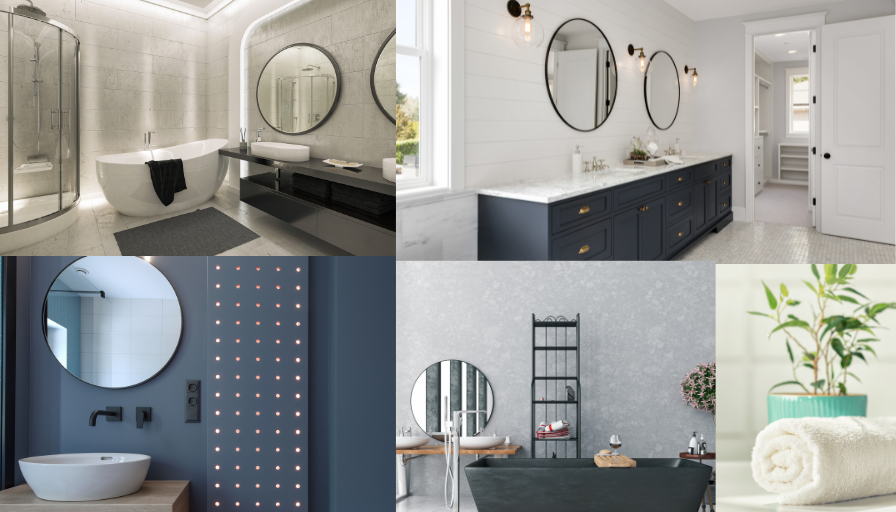Interior Design Styles
- Leo Kruger
- Nov 6, 2024
- 3 min read

When designing an interior space, understanding various interior styles and how to mix them effectively can elevate your project to a new level of sophistication and uniqueness. Each style comes with its own set of characteristics, from materials and color palettes to shapes and textures. Here’s an overview of some popular interior design styles and tips on mixing them seamlessly.
Modern Style
Modern style is characterized by clean lines, minimalism, and a focus on functionality. This style often features a neutral color palette, with shades of white, black, and gray, paired with metal, glass, and steel elements. Furniture in modern spaces is sleek, uncluttered, and emphasizes simplicity. This style is ideal for creating a sense of calm and order in a room.
Contemporary Style
While similar to modern, contemporary style is more fluid and dynamic, reflecting current trends. This style can incorporate bold colors and contrasts with a mix of textures, from smooth to rough surfaces. Contemporary spaces often showcase asymmetry and innovative materials, providing a fresh and updated look that evolves with time. This adaptability makes it an excellent style to mix with other, more defined aesthetics.
Industrial Style
Inspired by warehouses and factories, industrial style is raw and edgy. It includes exposed brick walls, unfinished wood, metal fixtures, and open spaces. The color palette is generally neutral, focusing on grays, blacks, and earth tones. This style’s unfinished appearance can pair well with softer styles, adding contrast and personality.
Scandinavian Style
The Scandinavian style emphasizes simplicity, functionality, and a connection to nature. Featuring light colors, wooden elements, and clean lines, it creates a cozy, inviting atmosphere. Scandinavian interiors often include muted color schemes, with whites, light grays, and pale blues. Natural light and minimalism are key in this style, making it an excellent pairing with more dramatic styles like industrial or eclectic for added warmth.
Mid-Century Modern Style
Mid-century modern style celebrates retro design with clean lines, organic shapes, and a bold color palette that includes rich oranges, greens, and yellows. This style incorporates furniture with tapered legs, sleek silhouettes, and materials like teak and walnut. Mid-century modern pieces can be statement items in almost any space, especially when combined with minimalist or contemporary styles.
Bohemian Style
Bohemian, or “boho” style, is all about embracing creativity and individuality. It incorporates a mix of patterns, textures, and vibrant colors. Boho interiors often feature eclectic decor, vintage furniture, natural materials, and a variety of fabrics and textiles. This carefree style works beautifully with rustic or Scandinavian spaces, adding warmth and personal expression.
Traditional Style
Traditional style is rooted in classic European decor, with rich colors, elaborate details, and a sense of formality. This style includes furniture with curved lines, wood finishes, and ornate details. Traditional interiors pair well with contemporary and eclectic styles for a balanced, timeless look that avoids feeling overly formal or old-fashioned.
Eclectic Style
Eclectic style combines elements from multiple styles to create a unique, personalized space. It involves careful layering of colors, textures, and patterns, often bringing together vintage and modern pieces. This style allows for maximum creativity but requires a cohesive color scheme or central theme to avoid a chaotic appearance.
When combining styles, the goal is to create harmony and balance rather than a disjointed look. Here are some tips:
- Establish a Dominant Style: Choose one style to be the primary focus, then incorporate elements of a second style. For example, a predominantly Scandinavian room with boho accessories or a traditional space with a few contemporary pieces can achieve balance.
- Stick to a Consistent Color Palette: Choosing a cohesive color palette helps unify different styles. For instance, combining industrial and Scandinavian styles might work well if both emphasize a neutral color palette with natural materials.
- Mix Materials and Textures: Pair different textures to add depth. For example, you could combine a sleek modern sofa with a rustic wooden coffee table, or pair smooth metals with soft fabrics in a contemporary-industrial space.
- Create Focal Points: Use statement pieces, like a mid-century modern chair in a modern room or an industrial-style coffee table in a boho space, to anchor the look and make the combination feel intentional.
- Use Accessories to Blend Styles: Accessories like throw pillows, rugs, and art pieces are effective tools for subtly introducing a secondary style. For example, boho elements can be introduced through colorful textiles in a minimalist space, creating a dynamic yet cohesive look.
By thoughtfully mixing interior styles, you can create a space that is both visually appealing and uniquely yours. This approach allows for creativity while maintaining a well-curated environment, reflecting your personality and aesthetic preferences.
TF Furrnishers - Leo Kruger




Comments